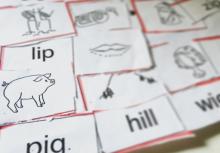Novelty. Complexity of array. Sensory complexity. Preferred color. These are some of the characteristics of cortical visual impairment. More importantly, these are descriptors for my son’s vision. Such words have become a second language. At times it...
Blog Posts
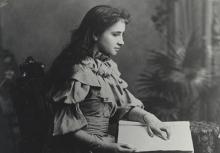
Posted by Charlotte Cushman
Helen Keller was born on June 27, 1880 and we pause this week to salute a woman who devoted her life to the rights of people who are blind or deafblind. She was a prolific reader and writer, and many of her original letters are housed in the...
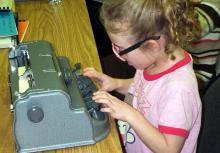
Posted by Penny Rosenblum
Editor's Note: Please note that these free lessons are offered as an introduction to the braille code and are not intended to be complete. These lessons are designed to give families and other individuals who are sighted an understanding...
Posted by Scott Baltisberger
In a nation with a large immigrant population, issues regarding bilingual education for learners with visual impairment arise on a regular basis. As children from Latin American backgrounds continue to comprise the majority of students with limited English...
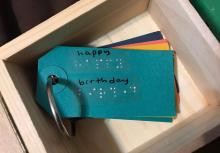
Posted by Liamsmom
My son Liam recently turned eight years old! He is a braille reader and every year for his birthday I have made him a birthday book that included pages from friends that have come to his party. Here are some of the ideas we've done in the past...
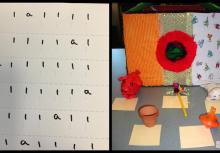
Posted by Mary McCarthy
I am currently working with a child who has decreased sensitivity. Below are a few suggestions. I try to keep each activity to five minutes or less and provide lots of praise.
First I had the OT do a sensitivity test and she was able to...
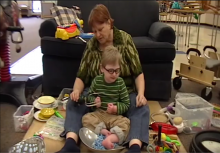
Posted by Kate Hurst
One of the least flashy pieces of equipment or “perceptualizing aids” created by Dr. Lilli Nielsen is the Resonance Board. For all of its lack of flash, in my opinion it is one of the most valuable and versatile pieces of equipment ever...

Posted by Diane Sheline
Children with cortical visual impairment (CVI) present a unique challenge to educators and families, and many wonder what the impact is on the development of literacy skills. The information presented here is designed to be an overview of some of the...
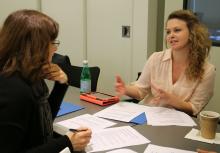
Posted by Charlotte Cushman
In the five years since Paths to Literacy was launched, we have found a growing number of personnel preparation programs are using the Paths to Literacy website as part of their coursework. There are programs around the world training people to become...
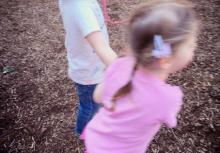
Posted by Brenda Biernat
On our way home from afternoon preschool, we stop at the playground. This has become our habit on these warm spring days. We were not there long before Jasper made a friend, Robin, or rather, she befriended him. “Let’s go slide together, Jasper...

Posted by Lisa Pruner
By Lisa Pruner and Catherine Summ, State of Connecticut, DORS-Bureau of Education and Services for the Blind, Windsor, CT
Over the past few years, we have created a collection of literacy skills kits for children with blindness or...
Posted by Lisa Jacobs
Tactile baby blankets or quilts are a wonderful way to encourage exploration among our youngest children who are blind or visually impaired, including those with multiple disabilities or deafblindness. Presenting the child with a variety of tactile...
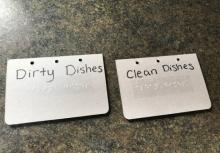
Posted by Liamsmom
Learning independent living skills starts at home! My son Liam is in second grade and is deafblind. I continually think of ways that he can help out around the house and do everyday tasks as independently as possible. Of course I think of ways that I...
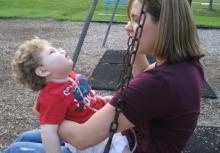
Posted by Wendy Miller
By TVIs Krista Papish and Wendy Miller, with support from Cindy White-Botello
How does learning occur? While many of us do this with very little effort, for children with visual impairments and additional disabilities it is an ongoing...
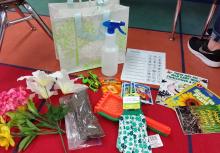
Posted by Deedra Finch
My name is Deedra Finch and I am an itinerant TVI. It’s also my 17th year of teaching (11 years special education, 6 years in both public and residential vision settings). My caseload consists of students who are visually impaired with additional...
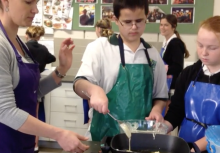
Posted by Debra Goodsir
I love Paths to Literacy and often use the ideas it presents with my students. I read everything I can, pass it on to other TVIs and class teachers and discuss it with my students. I also love working collegially with creative, enthusiastic classroom...
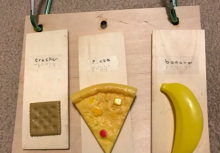
Posted by Liamsmom
I am the mother of two sweet boys. My oldest, Liam, is 7 years old and is deafblind. His first language is American Sign Language. My youngest, Finn, is 4 years old and has typical vision and hearing. Going to the grocery store...
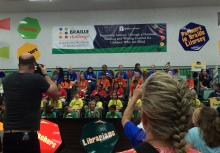
Posted by Tracy Fitch
The Braille Challenge hosted by The Braille Institute is an exciting competition of braille skills! The braille challenge encourages students to hone their braille skills in the hopes of placing first in their level. There are five levels: Apprentice...
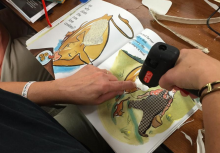
Posted by Lacey Long
As an itinerant TVI/COMS for a multi-district special education unit, it can be difficult to provide quality professional development for teachers specifically for students with visual impairments. One area that I felt was necessary to provide training for...
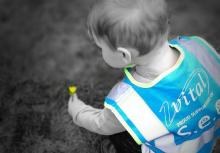
Posted by Daniel Downes
Daniel Downes, Teacher of Vision Impairments, has developed a programme called SEE (Sensory Enriched Experiences) which puts rich literacy experiences at its heart. In the first of a 3-part series, Gwyn McCormack, Director of Positive Eye writes about the...

